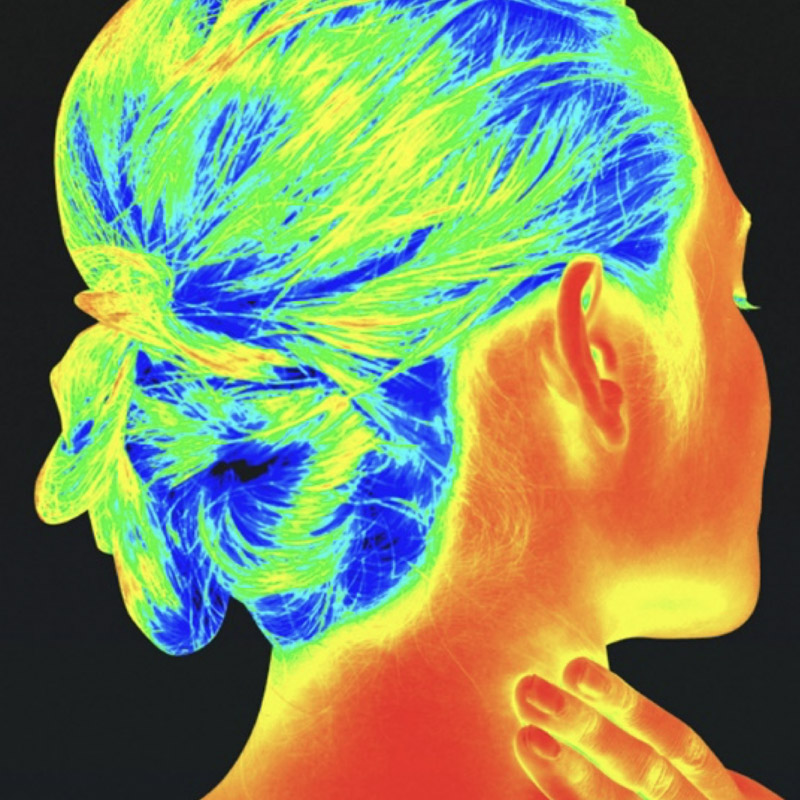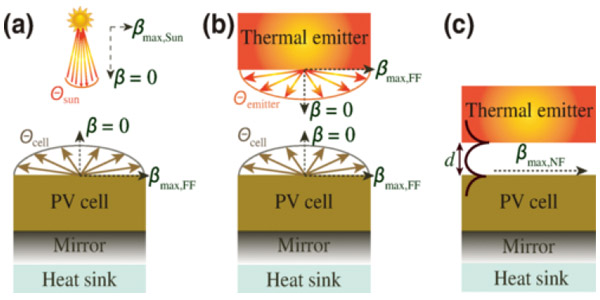Thermophotovoltaics
Approximately 70% of all energy produced by humanity is lost as waste heat. Implementing efficient mechanisms to recover this heat could have a significant and direct impact on such losses, in turn reducing the amount of CO2 released to the atmosphere. Thermophotovoltaics—the conversion of heat to electricity via photons—is an emerging technology that could prove to be a key enabling technology in this regard.

What?
Thermophotovoltaics is enabled by studying the infrared properties of natural materials as well as nanostructures and emerging materials with unique optical response and favorable radiative properties. The overall objective is to develop efficient methods to extract light and energy from hot objects and use these to tailor the flow of radiative heat and direct it towards PV cells for energy conversion.
Why?
Harnessing thermal radiation could lead to applications in thermal management, cooling, renewable energy, optoelectronics, light emission, and spectroscopy. If implemented correctly these applications could help to address the huge amount of waste heat currently being produced.
How?
Researchers at ICFO will study the infrared properties of advanced materials, enabling tuning of thermal emission and proposing designs that can potentially approach thermodynamic limits in heat-to-electricity energy conversion.
Who?
In the Thermal Photonics group at ICFO, led by Prof. Dr. Georgia Papadakis, researchers are working on advancing the underlying theory and practical application of engineering thermal emission and controlling the radiative heat transfer between bodies at different temperatures.
Thermophotovoltaic (TPV) systems can actually convert heat into electricity by placing a hot thermal emitter at a varying distance (far or near field) from a photovoltaic cell.

Schematics of (a) solar PV cell, (b) far-field TPV, and (c) near-field TPV. Link to paper.